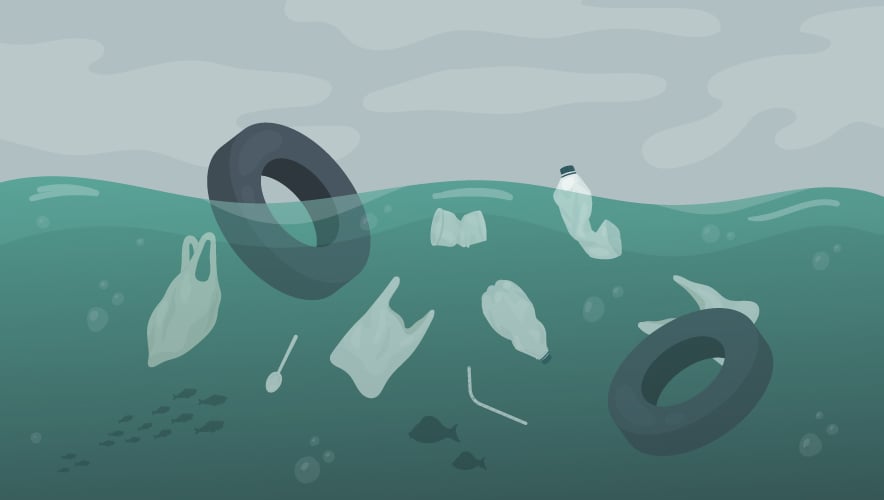Hunting for Profits, Criminal Groups Turn to the Environment
Environmental crimes carry high profits and low penalties, attracting the attention of organized criminal organizations. In the European Union alone, the profits of some criminal networks involved in environmental crimes—from trafficking protected wild animals to waste and pollution crimes—reach millions of euros every year, according to Europol’s July 2022 report Environmental Crime in the Age of Climate Change.
The worldwide economic damage caused by environmental crime was valued at between 76 billion and 218 billion euros in 2016—and it has continued to increase, especially as climate change affects operations and resources.
“In the future, climate change may lead to a shortage of essential products and higher prices for basic services, and criminal networks may offer harmful low-price alternatives,” the Europol report said. Those low-price goods are often counterfeit, which can pose significant risk to consumers because they may have been made without following environmental protection standards.
In addition, “extreme weather conditions and food insecurity in certain regions of the world will further exert political instability and trigger conflicts, fostering demographic pressure and inducing mass migrations, while creating opportunities for smuggling, human trafficking, and exploitation.”
🌍 There’s only one Earth. We can’t let criminals destroy it.
— Europol (@Europol) July 4, 2022
📽️ At Europol tackling #EnviCrime is a priority. We work closely with 🇪🇺 member states & partner countries to disrupt the criminal networks engaged in these illicit activities.
More info ➡️ https://t.co/KgVHip5KVU pic.twitter.com/VN5C7lVJfq
Environmental crimes are often tied to legitimate businesses, which makes them more difficult to discover and investigate. It also allows criminal networks to adapt to changing demand.
“The majority of environmental crime actors are opportunistic legal business owners/operators who decide to increase their chances of profit by establishing a criminal venture,” the report said. “These networks are mainly composed of low-level associates who operate under the command of few leaders, who are located far from the criminal activities.”
For instance, criminal networks in Europe may ship illicit plastic waste to Southeast Asia or electronic equipment waste to Africa, skirting environmental regulations.
In the past decade plastic use increased around the world by 10 million metric tons a year, reaching nearly 370 million metric tons in 2019 alone. After China banned the import of multiple types of waste, including plastic, in 2018, criminal businesses adapted to exploit demand for plastic waste management, shipping illicit plastic scrap to Indonesia, Malaysia, Vietnam, and other countries, exploiting legal loopholes on waste importation, Europol said.
Criminal groups take advantage of environmental opportunities in a variety of ways, including trafficking in wildlife, wood, and other natural resources. On 18 July, Malaysian authorities announced they had seized a massive haul of trafficked animal parts, including elephant tusks, rhinoceros horns, pangolin scales, and tiger bones. The collection of parts was worth around 80 million ringgit ($17.9 million), Reuters reported.
Illegal wildlife trafficking is the world’s fourth largest illicit transnational activity (behind narcotics, human trafficking, and counterfeits), valued at $119 billion in 2020, according to a 2021 report Economic value of illegal wildlife trade entering the USA.
In addition, law enforcement and customs agencies face an increasingly complex marketplace for trafficked wildlife. Tiger cubs, leopards, ocelots, African grey parrots, and monkeys were all for sale on Facebook pages and public groups, according to a report from global campaign group Avaaz.
“The multibillion-dollar business is linked to a myriad of harms including animal cruelty, endangering species and ecosystems, and fueling the transmission of disease from animals to humans such as coronavirus, Ebola, dengue, anthrax, and bird flu,” reported The Guardian.
Despite Facebook’s efforts—including co-founding the Coalition to End Wildlife Trafficking Online—the social media platform remains popular for animal traffickers, and they often falsely label their goods as captive-bred or to skate around regulations and trick monitoring authorities, according to Europol.
To make matters worse, the funds from natural resources trafficking often end up filling criminal and terrorist organizations’ coffers.
Wildlife trafficking has been reported as a source of funding—albeit not a primary one—for many terrorist and crime groups. Instead, terrorist organizations have focused in on other scarce environmental resources: minerals and precious metals.
“The exploitation, trade, and trafficking of natural resources (including precious metals and minerals such as gold, silver, copper, and diamonds, as well as timber, charcoal, and wildlife) represent a significant source of profit for criminals and are sometimes used as opportunities to finance terrorist activities and groups,” according to a June 2022 UN Security Council Counter-Terrorism Committee Executive Directorate (CTED) report. “Terrorist engagement in legitimate economies related to natural resources is strategically important for these groups, both to generate regular income and to further diversify the sources of funding.”
For instance, in the Syrian Arab Republic and Iraq, ISIL was able to generate considerable income from the production of and trade in oil and natural gas. In the Lake Chad Basin region, cattle rustling and livestock raids represent a key source of income for Boko Haram. Terrorist groups have also illegally taxed farmers, either in money or a portion of their harvest.
The report, Concerns Over the Use of Proceeds from the Exploitation, Trade, and Trafficking of Natural Resources for the Purposes of Terrorism Financing, notes that the use of natural resources to fund crime not only compounds conflicts and exacerbates instability, but it is an aggravating factor in regions that are most exposed to climate risks.
“In the Horn of Africa, for example, higher frequency of extreme weather events, water shortages and flooding are already having implications for employment and food security, such as limiting the ability of herders and farmers to recover and pushing vulnerable communities into displacement,” the report said.
Competition for diminishing natural resources in those regions can also act as a risk multiplier for radicalization, especially in regions with pre-existing conflicts, the report warned.
